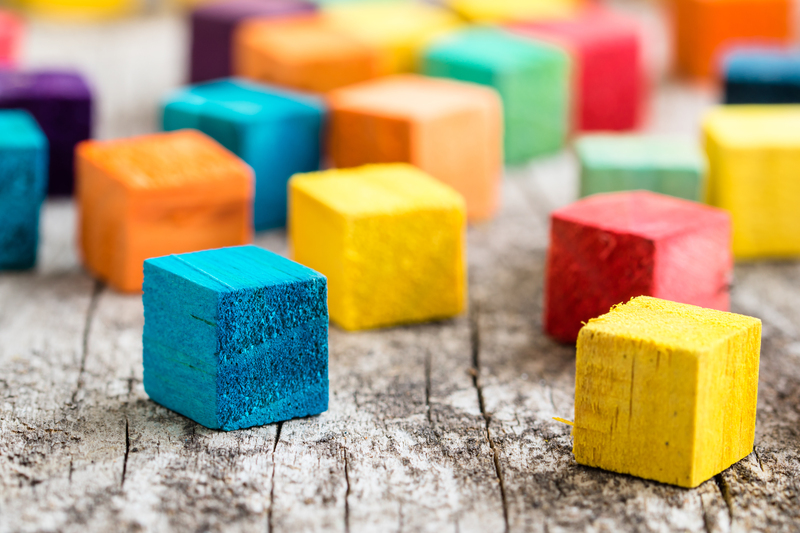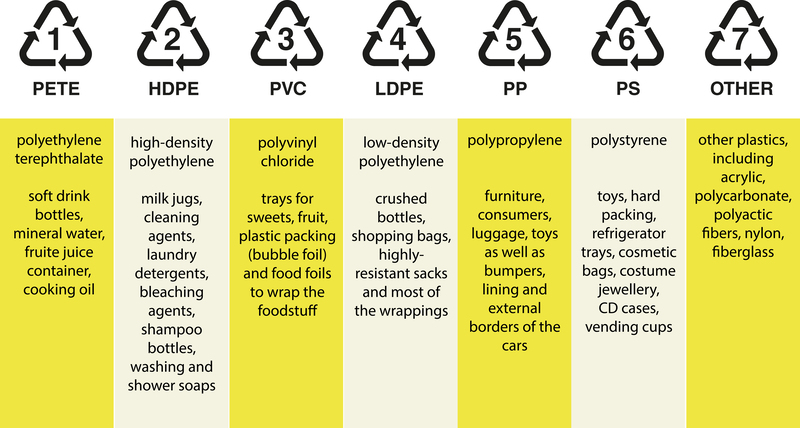Modern Methods for Plant Pot Disposal: An Eco-Friendly Guide
Indoor and outdoor gardening continues to surge in popularity, but with it comes an often overlooked environmental dilemma: what do we do with all our empty plant pots? Whether you have plastic nursery containers, terra cotta, ceramic, or even biodegradable pots, plant pot disposal can present a significant waste management challenge. Improper disposal contributes to landfill waste, hinders recycling streams, and may even harm local ecosystems. This comprehensive guide explores modern methods for plant pot disposal so that you can grow your green thumb while keeping sustainability in mind.

Understanding the Problem: Why Responsible Plant Pot Disposal Matters
Nearly every plant you purchase comes in a pot - usually plastic. Millions of these pots are used each year, and too many end up piling up in landfills. Unlike garden waste or compostable materials, traditional plant pots don't always break down easily. Plastic pots can take hundreds of years to decompose, and not all plastics are recyclable through municipal programs. Even ceramic and terracotta can present disposal difficulties.
- Environmental Impact: Improperly discarded pots add to landfill mass and pollute the environment.
- Resource Waste: Reusable materials are lost when pots aren't recycled or reused.
- Recycling Challenges: Mixed materials, dirt residue, and non-standard plastics complicate recycling processes.
Types of Plant Pots and Their Disposal Challenges
- Plastic Pots: Often made from #5 (PP) plastic, which is sometimes accepted in municipal recycling, but not always.
- Biodegradable Pots: Made from compressed peat, coir, or cardboard. Meant for direct planting, but disposal errors are still common.
- Ceramic & Terracotta Pots: Long-lasting but breakable--rarely accepted in standard recycling.
- Metal/Painted & Specialty Pots: Decorative finishes can complicate recycling or composting.
1. Reuse: The Most Eco-Friendly Plant Pot Disposal Method
Before considering recycling or waste disposal, reusing plant pots is always the most sustainable option. Not only do you save money and reduce landfill input, but you also lower the demand for new container production.
Creative Ways to Reuse Plant Pots
- Repot New Plants: Sterilize old pots for future gardening needs.
- Seed Starters: Use smaller pots for germinating seeds or propagating cuttings.
- Organizational Tools: Store garden tools, seeds, or use pots as caddies in sheds or garages.
- Craft Projects: Decorate with paint, washi tape, or decoupage for home decor items.
- Community Exchange: Donate clean pots to schools, community gardens, or neighbors.
Tip: Many garden centers and plant nurseries accept used pots for reuse or recycling. Some even offer pot return programs for a small discount or a gratitude gesture.
2. Recycling Plant Pots Based on Material
If reuse isn't feasible, recycling plant containers is the next best step. However, recycling options vary widely depending on the type of pot and local infrastructure.
Recycling Plastic Plant Pots
- Check Plastic Type: Most pots use #5 (polypropylene) plastic. Look for the recycling code on the bottom.
- Clean Thoroughly: Remove all soil and labels--dirty pots can contaminate recycling streams.
- Consult Local Guidelines: Many municipal programs do not accept garden plastics in curbside bins, but some larger garden centers (like Lowe's, Home Depot, or local cooperatives) provide dedicated drop-off areas.
Ceramic and Terracotta Pot Recycling
Ceramic and terracotta are rarely accepted by standard recycling facilities. However, crushed pieces can serve multiple eco-friendly disposal methods:
- Use as drainage material at the base of garden beds or larger planters.
- Donate to mosaic artists or schools for crafting projects.
- In rare cases, some construction recycling centers accept ceramics as aggregate for road base or fill.
Biodegradable Plant Pot Disposal
The best way to dispose of biodegradable plant pots is to plant them directly into the ground with your plant, as intended. Otherwise, you can:
- Compost: Tear up coconut fiber, cardboard, or peat pots and add to your compost bin (ensure they're not coated with plastic film).
- Green Waste: Dispose of in municipal green waste if allowed by local authorities.
3. Pot Return & Retailer Take-Back Programs
Recognizing the issue, many retailers now actively participate in plant pot return programs. These initiatives collect used plant pots for reuse, recycling, or mass cleaning and redistribution.
- Garden Centers: Large chains (e.g., Lowe's, Home Depot, local nurseries) often provide drop-off stations where you can leave clean used pots.
- Nonprofits: Community gardens and urban agriculture initiatives may have periodic pot collection events.
- Local Recycling Hub: Some regions host special recycling days for hard-to-recycle materials, including garden plastics.
Always call ahead to confirm which types of pots are accepted and if preparation (like cleaning or stacking) is required.
4. Upcycling & Repurposing: Innovative Disposal Alternatives
If neither reuse nor recycling is an option, get creative with upcycling plant pots. Giving them a new life outside of the garden reduces the need for new products and keeps materials out of the waste stream.
Fun Upcycling Ideas for Old Plant Pots
- DIY Lanterns: Transform larger pots into patio lamps with solar lights.
- Bird Feeders: Hang small pots upside-down with a dish underneath for seeds.
- Desk Organizers: Decorate and use for pencils, scissors, or craft supplies.
- Miniature Gardens or Terrariums: Create fairy gardens or succulent arrangements for interior decor.
- Outdoor Art: Stack and paint into garden totems or wind chimes.
5. Composting Biodegradable Pots
With the market for biodegradable plant containers growing, composting is a modern, sustainable choice for disposal. Here's how to do it correctly:
- Confirm Material: Ensure plant pots are made from natural fibers, not lined with plastic or containing chemicals.
- Tear Into Pieces: Break down pots to speed up the composting process.
- Mix With Green & Brown Waste: Add to compost piles with leaves and grass clippings for balanced decomposition.
Please note: Some so-called "green" pots are only plant-based on the outside and may be lined with synthetic materials, which must be removed before composting.
Specialty Alternatives and Innovations
Eco-friendly and Recycled Pottery
- Look for pots made from recycled plastics--they often display recycling symbols and are designed for repeated recycling cycles.
- Some companies create containers from creatively repurposed materials such as rice husks, bamboo fiber, or post-consumer waste, which are compostable or recyclable via specialty programs.
- Choose brands and retailers committed to circular economy practices such as pot return, refill, or refabrication processes.
Reducing Your Plant Pot Footprint
- Buy plants bare-rooted or in compostable wraps when possible.
- Patronize nurseries with pot take-back or swap initiatives.
- Invest in high-quality, long-lasting pots from the start.
The Importance of Responsible Plant Pot Disposal
Properly disposing of your old plant pots is more than a decluttering exercise--it's a vital step in reducing gardening's ecological impact. Through recycling, reusing, upcycling, and supporting retailer take-back schemes, every gardener can be part of the solution.
- Minimize Landfill Waste: Avoid adding to the plastic or pottery pileup in municipal dumps.
- Support Circular Systems: Help cultivate local economies and businesses focused on sustainability.
- Inspire Community Action: Share your sustainable practices with friends, neighbors, and gardening groups to inspire further change.

Frequently Asked Questions About Modern Methods for Plant Pot Disposal
Can I put plastic plant pots in my curbside recycling?
Most municipal recycling programs do not accept garden plastics due to soil contamination and differing resin codes. Always check with your local recycler, and, if eligible, clean pots thoroughly.
What should I do with broken terra cotta pots?
Broken terra cotta can be used as drainage material in planters, mulch, or as filler for raised beds. Some artists or schools may accept them for craft projects.
Are biodegradable pots really compostable?
Yes, if they're made entirely from organic, uncoated materials such as peat, coir, or cardboard. Remove any synthetic linings or labels prior to composting.
Are there any alternatives to buying new plant pots?
Absolutely! Shop at plant swaps, reuse containers from food products, or look for second-hand items at thrift stores. Many nurseries and fellow gardeners are happy to share pre-loved pots.
Conclusion: Embracing Modern, Sustainable Ways to Dispose of Plant Pots
Gardening and sustainability should go hand in hand. By adopting these modern methods for plant pot disposal, you not only reduce your environmental impact but also contribute to a circular economy in your local gardening community. Reuse, recycle, upcycle, and support innovative disposal solutions--your garden (and the planet) will thank you!
What creative ways have you found to dispose of or reuse plant pots? Share your ideas and join the movement towards sustainable gardening practices!